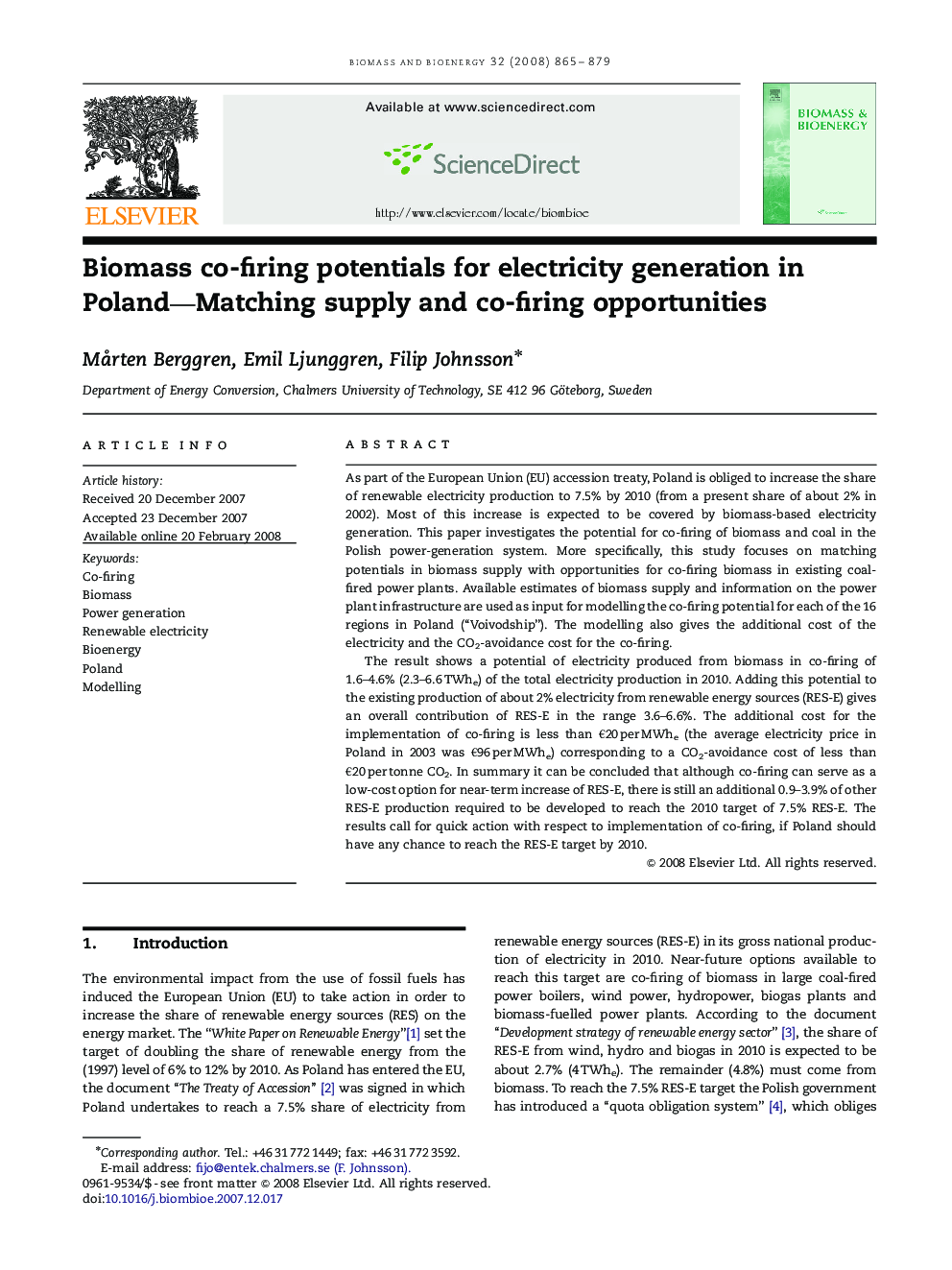| Article ID | Journal | Published Year | Pages | File Type |
|---|---|---|---|---|
| 678875 | Biomass and Bioenergy | 2008 | 15 Pages |
As part of the European Union (EU) accession treaty, Poland is obliged to increase the share of renewable electricity production to 7.5% by 2010 (from a present share of about 2% in 2002). Most of this increase is expected to be covered by biomass-based electricity generation. This paper investigates the potential for co-firing of biomass and coal in the Polish power-generation system. More specifically, this study focuses on matching potentials in biomass supply with opportunities for co-firing biomass in existing coal-fired power plants. Available estimates of biomass supply and information on the power plant infrastructure are used as input for modelling the co-firing potential for each of the 16 regions in Poland (“Voivodship”). The modelling also gives the additional cost of the electricity and the CO2-avoidance cost for the co-firing.The result shows a potential of electricity produced from biomass in co-firing of 1.6–4.6% (2.3–6.6 TWhe) of the total electricity production in 2010. Adding this potential to the existing production of about 2% electricity from renewable energy sources (RES-E) gives an overall contribution of RES-E in the range 3.6–6.6%. The additional cost for the implementation of co-firing is less than €20 per MWhe (the average electricity price in Poland in 2003 was €96 per MWhe) corresponding to a CO2-avoidance cost of less than €20 per tonne CO2. In summary it can be concluded that although co-firing can serve as a low-cost option for near-term increase of RES-E, there is still an additional 0.9–3.9% of other RES-E production required to be developed to reach the 2010 target of 7.5% RES-E. The results call for quick action with respect to implementation of co-firing, if Poland should have any chance to reach the RES-E target by 2010.
